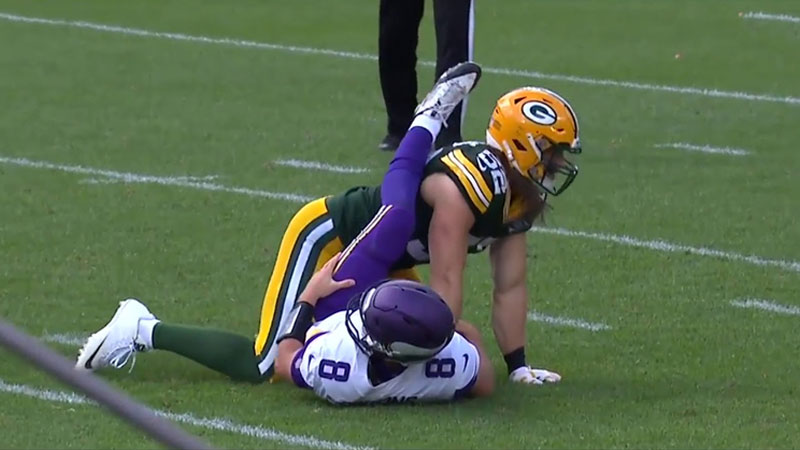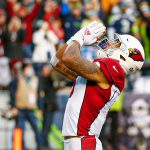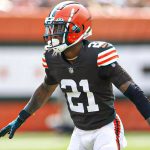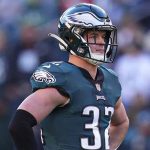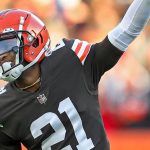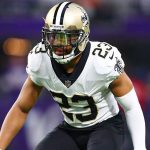In the high-stakes world of NFL football, the pursuit of victory often comes with a price tag. Beyond the touchdowns, tackles, and iconic moments, there’s a lesser-known aspect of the game that plays a crucial role in maintaining its integrity: fines.
The NFL’s fines rules list outlines a comprehensive set of penalties, both in terms of dollars and consequences, for players and teams who stray from the league’s established standards of conduct and safety.
In this blog post, we’ll delve into the NFL Football Fines Rules List, shedding light on the various infractions that can lead to financial penalties.
From helmet-to-helmet hits to unsportsmanlike conduct, we’ll explore the reasons behind these fines and the impact they have on players, teams, and the game itself.
Whether you’re a die-hard football fan or a casual observer, understanding these rules provides a deeper insight into the NFL’s commitment to fairness, safety, and sportsmanship.
NFL Football Fines Rules List
Generally, there are different penalties for what players and even spectators can be fined. Here is the list of NFL football fine rules.
Striking/Kicking/Kneeing

Fines for striking, kicking, or kneeling are imposed to discourage dangerous and unsportsmanlike conduct on the field. These actions can lead to serious injuries and have no place in the game.
The first offense incurs a fine of $7,875, while a second offense within the same season results in a doubled fine of $15,750. This progressive approach aims to deter players from engaging in such behavior.
The NFL prioritizes player safety and sportsmanship, and these fines reinforce that commitment by penalizing actions that pose a risk to the well-being of players.
Horse Collar Tackle
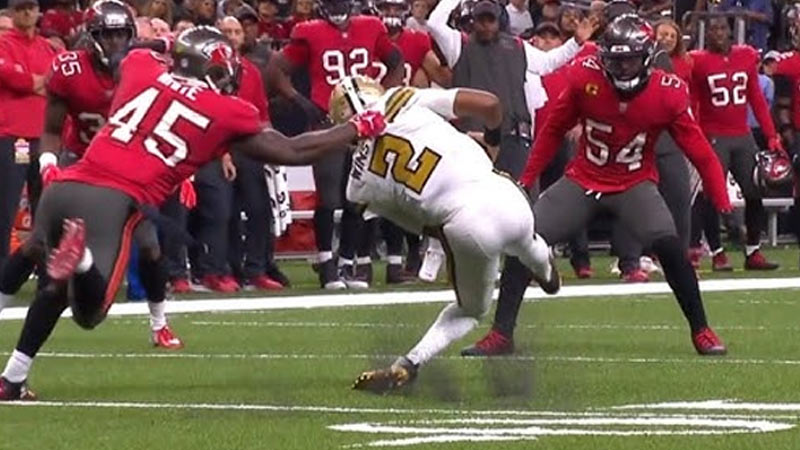
The horse collar tackles fine is in place to protect players from a dangerous tackling technique.
This tackle involves grabbing the inside collar of the player’s shoulder pads or jersey and pulling them down from behind, which can cause severe injury, especially to the lower extremities.
The first offense carries a hefty fine of $15,750, and a second violation within the same season doubles the fine to $31,500.
This penalty serves as a strong deterrent, emphasizing the NFL’s commitment to player safety by discouraging this hazardous tackling method.
Face Mask

Face mask fines are designed to prevent players from grabbing and twisting an opponent’s face mask during a play. Such actions can lead to neck or head injuries, making them a serious safety concern.
The NFL fines players $7,875 for the first offense and doubles it to $15,750 for a second offense in the same season.
By imposing these fines, the league emphasizes the importance of adhering to proper tackling techniques and discourages any actions that jeopardize player safety during the game.
It underscores the league’s commitment to minimizing unnecessary risks on the field.
Leg Whip
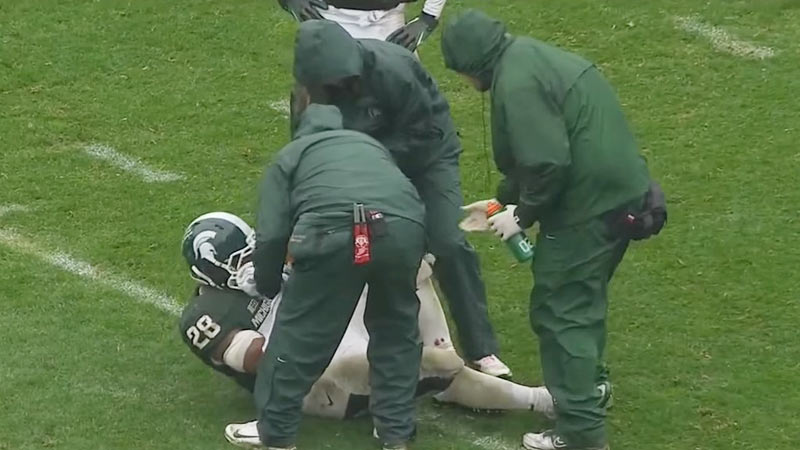
Leg whip fines in the NFL are imposed to discourage dangerous actions on the field. A leg whip occurs when a player uses their leg to trip or knock down an opponent by striking their leg.
This type of action is considered hazardous and can lead to severe injuries, including knee or ankle injuries.
The fines for leg whip violations serve as a deterrent to prevent players from engaging in this unsafe behavior.
Repeat offenses can result in significantly higher fines, emphasizing the league’s commitment to player safety.
Late Hit
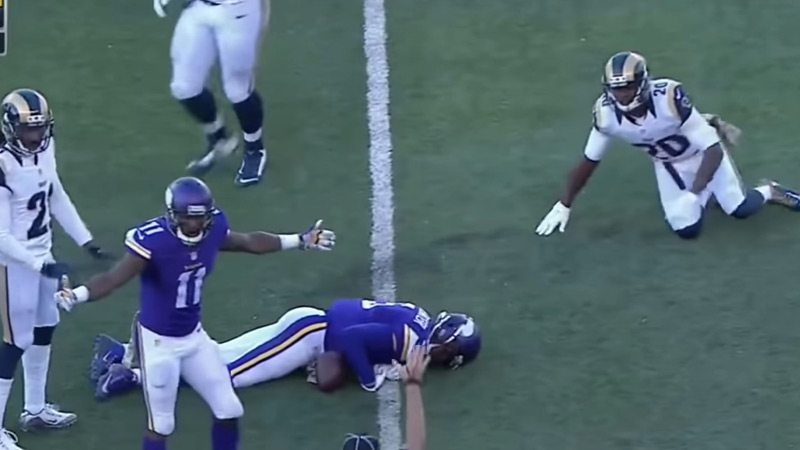
Late hit fines are issued to players who make contact with an opponent after the play has been completed or after the quarterback has released the ball. Late hits not only risk injury but can also escalate tensions on the field.
The NFL aims to protect the integrity of the game and player safety by penalizing late hits.
The fines escalate for repeat offenders to discourage a pattern of disregard for the rules.
Spearing
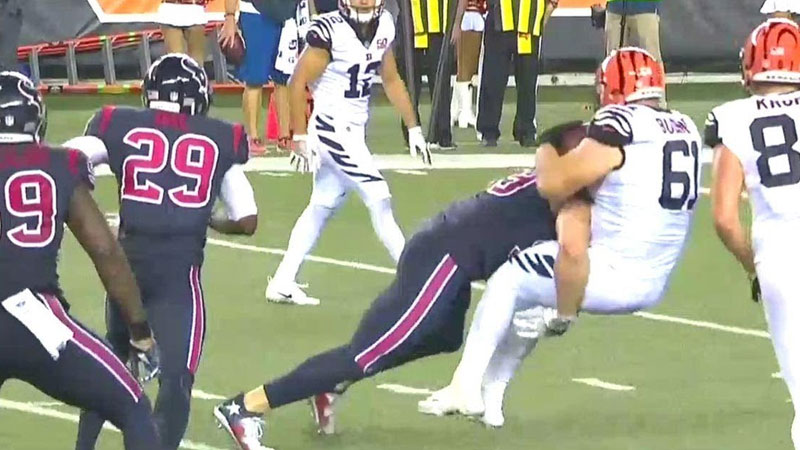
Spearing fines are levied when a player uses the crown of their helmet to strike an opponent.
Such hits can cause serious head and neck injuries, making them a significant concern for player safety.
The substantial fines for spearing underscore the NFL’s commitment to reducing dangerous hits and promoting safer tackling techniques.
Impermissible Use of Helmet
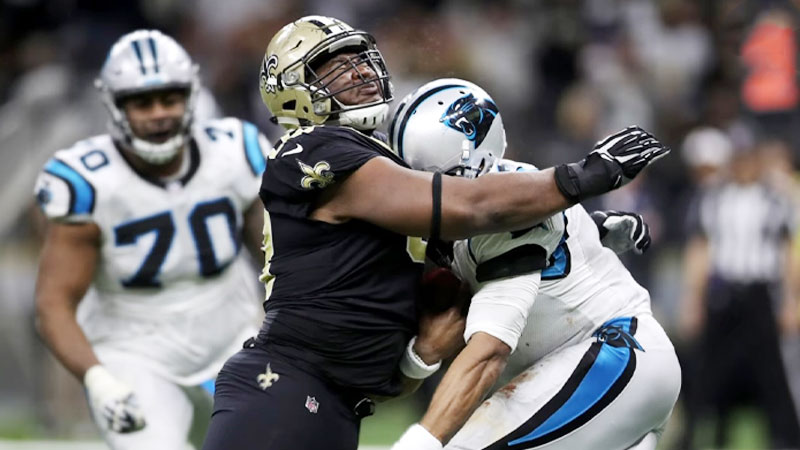
The impermissible use of the helmet targets actions where players lead with their helmet when making contact with an opponent.
This includes helmet-to-helmet hits and other unsafe uses of the helmet in tackles.
The fines aim to eliminate these risky plays and encourage safer tackling methods, ultimately reducing the risk of head and neck injuries on the field.
Hit on Defenseless Player
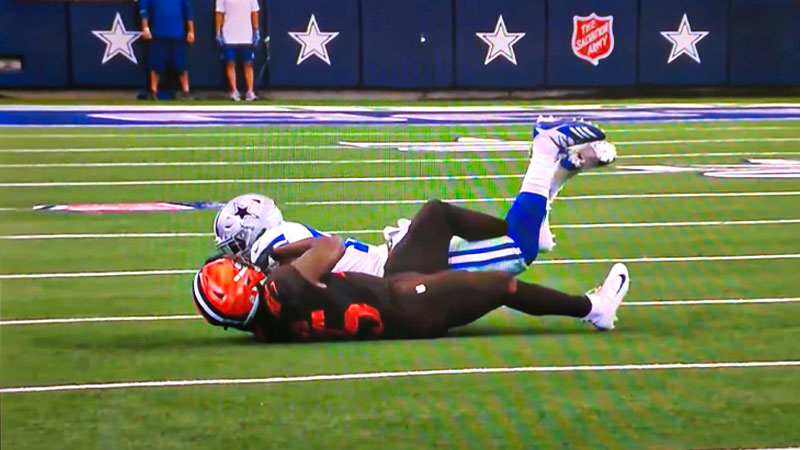
Fines for hitting defenseless players are designed to protect vulnerable athletes who may be in positions where they cannot defend themselves, such as receivers attempting to make a catch.
Striking defenseless players can lead to concussions and other serious injuries, which the NFL strives to prevent.
The escalating fines emphasize the league’s commitment to ensuring player safety and maintaining the integrity of the game.
Blindside Block
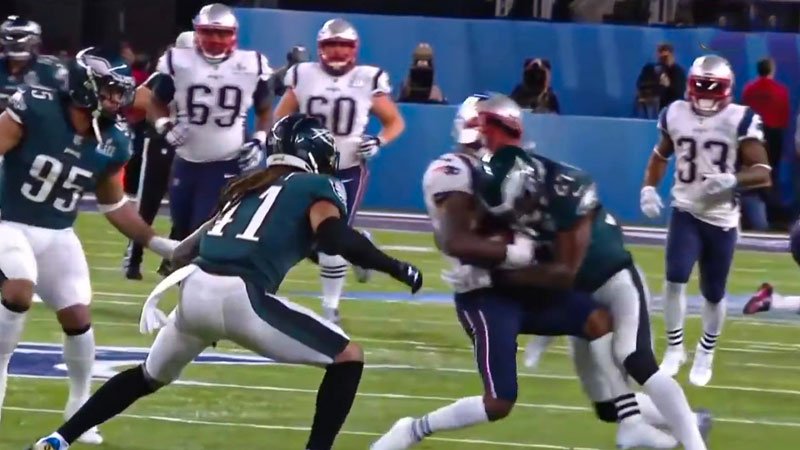
Blindside blocks occur when a player initiates a block against an opponent who does not see it coming, typically from the blindside.
The NFL imposes fines for these blocks to prioritize player safety. Such hits can result in serious injuries, including concussions or spinal injuries.
The fines for blindside blocks aim to discourage players from engaging in actions that could potentially harm their fellow competitors.
Roughing the Passer
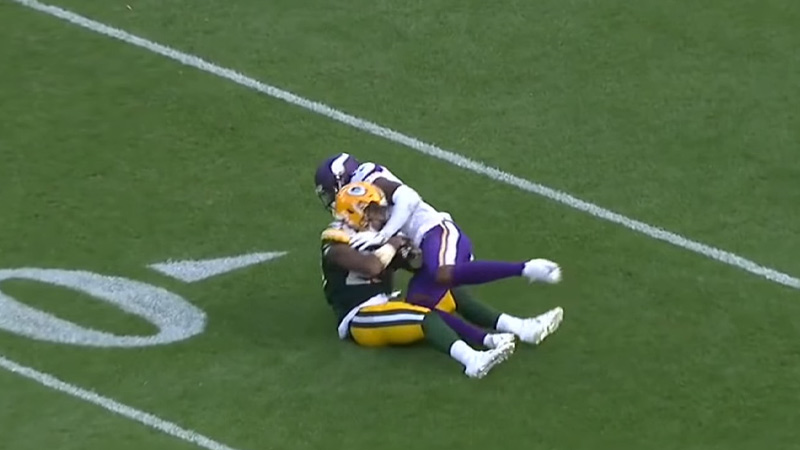
Roughing the passer penalties are enforced to protect quarterbacks, who are often vulnerable while in the act of passing. These fines deter defenders from making late or excessively violent hits on quarterbacks.
The fines are higher for this infraction as it’s a critical part of the game and quarterbacks are considered the face of the franchise.
By penalizing roughing the passer, the NFL aims to ensure the longevity and health of its star players.
Low Block
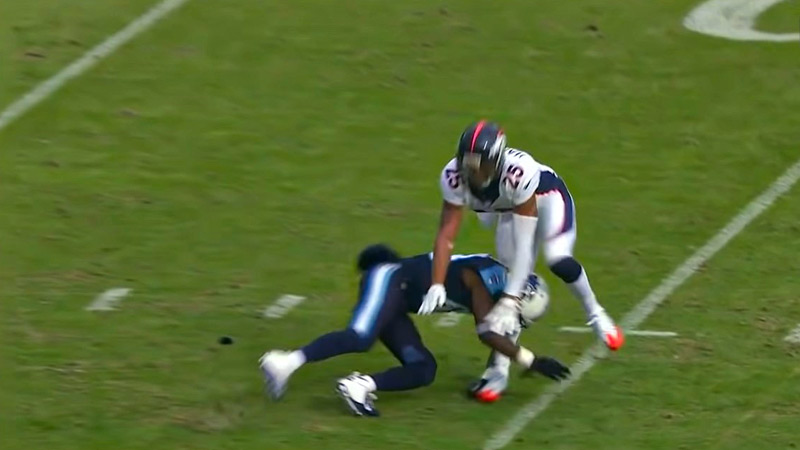
Low block fines target actions where a player initiates a block by going low, often aiming at the knees of an opponent.
This type of block can result in severe knee injuries and is especially dangerous. The fines serve as a deterrent against engaging in such actions, emphasizing the NFL’s commitment to player safety.
Chop Block
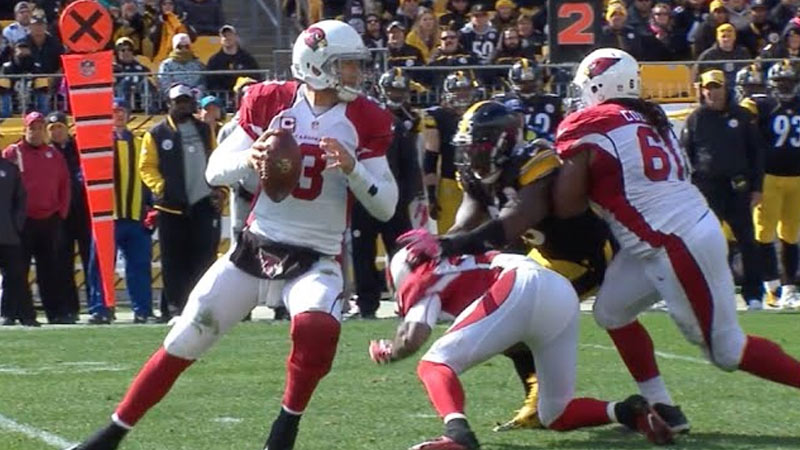
Chop blocks are a dangerous combination of high and low blocking, where one player goes low at an opponent’s legs while another player engages high.
This tactic is illegal because it significantly increases the risk of injury to the defender.
The fines associated with chop blocks discourage teams and players from using this dangerous blocking technique, further safeguarding player health and safety on the field.
Fighting Fine in the NFL

Fighting in NFL games is strictly prohibited due to its potential to escalate tensions and jeopardize player safety. The league imposes hefty fines to discourage this behavior.
A first-time offense for fighting can result in a fine of $26,500, with the amount doubling to $52,500 for a second offense.
These fines are intended to serve as a deterrent, as well as to penalize those who engage in on-field altercations that can disrupt the game and tarnish the league’s image.
Entering Fight Area (Active) Fine
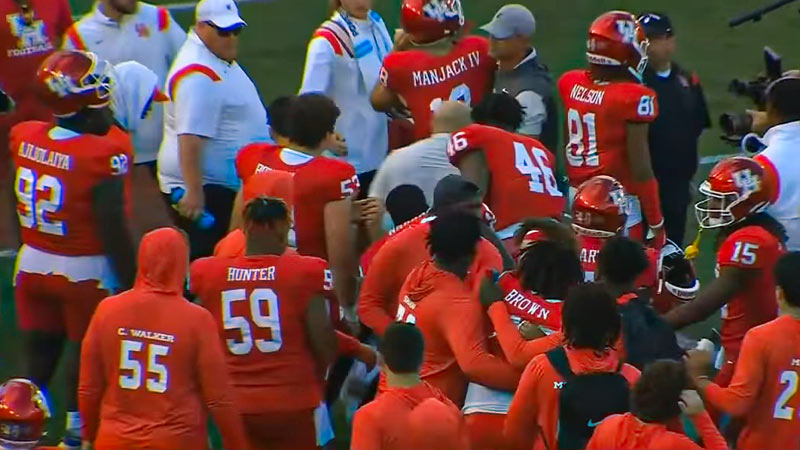
Entering the fight area during an active altercation is subject to a fine of $5,250 for a first offense and $10,500 for a second offense.
This rule aims to prevent players not directly involved in a fight from joining the fray, which could exacerbate the situation and lead to additional safety concerns.
Entering Fight Area (Inactive) Fine
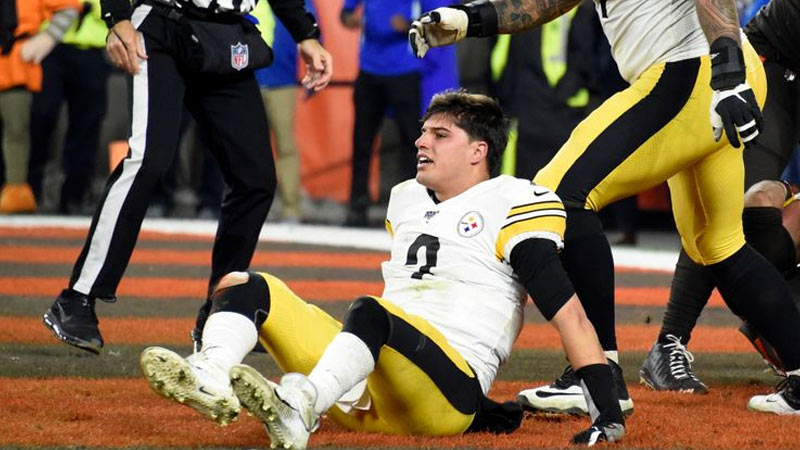
Source: skysports.com
Even entering the fight area when the altercation is inactive can incur penalties. Players who do so may face fines of $2,625 for a first offense and $7,875 for a second offense.
The distinction between active and inactive fights underscores the NFL’s commitment to maintaining order and safety on the field at all times.
Unsportsmanlike Conduct Fine

Unsportsmanlike conduct, which includes actions like taunting, excessive celebrations, or disrespectful behavior towards opponents or officials, is penalized with fines.
A first-time offense results in a fine of $10,500, with a second offense doubling the amount to $21,000.
These fines aim to maintain sportsmanship and respect for the game while discouraging disruptive or disrespectful behavior that can harm the NFL’s reputation.
Taunting
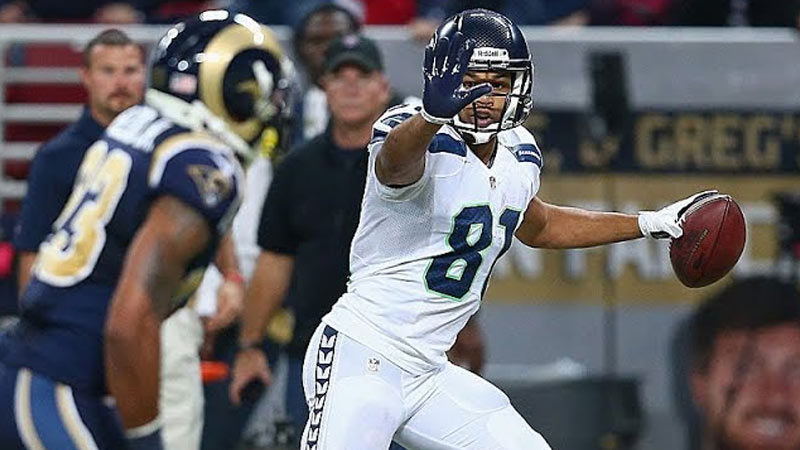
Taunting fines are imposed to discourage unsportsmanlike conduct and maintain the integrity of the game. Players engaging in excessive celebrations or taunting opponents risk these fines.
The first offense incurs a $7,875 fine, with subsequent offenses escalating to $10,500. These fines aim to promote respect among players and prevent altercations that could escalate into fights.
Football into Stands
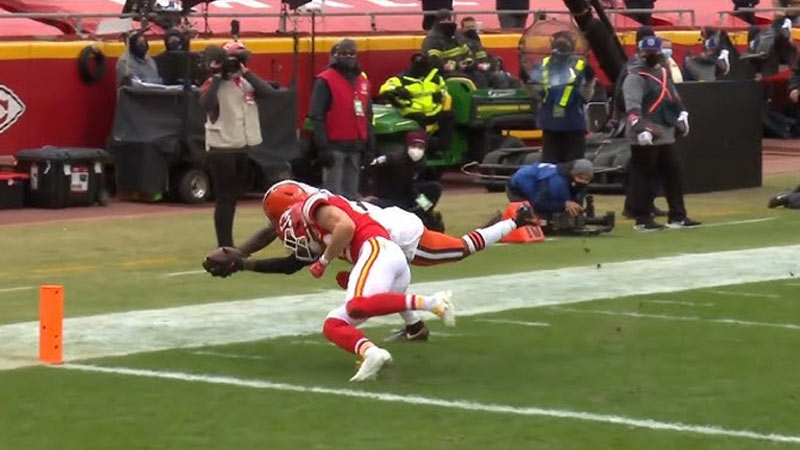
Throwing the football into the stands after a touchdown can result in fines. While it’s a celebratory act, it poses safety concerns, including the risk of injuring fans.
The first offense results in a $5,250 fine, with a second offense doubling to $10,500. This rule aims to ensure the safety of spectators and maintain crowd control.
Foreign Substance
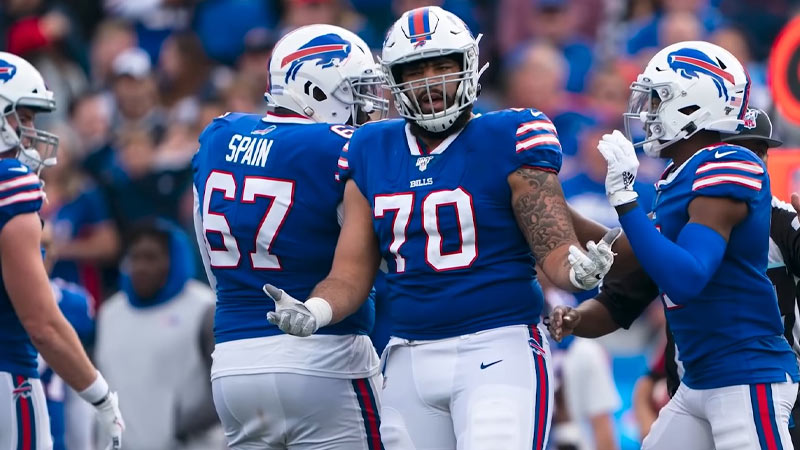
Foreign substance fines target players using foreign substances, like stickum or slippery substances, to gain an advantage. Such substances can affect the game’s fairness and player safety.
The first offense incurs a $7,875 fine, but repeat violations can lead to a steep $15,750 penalty, emphasizing the NFL’s commitment to a level playing field.
Chin Straps
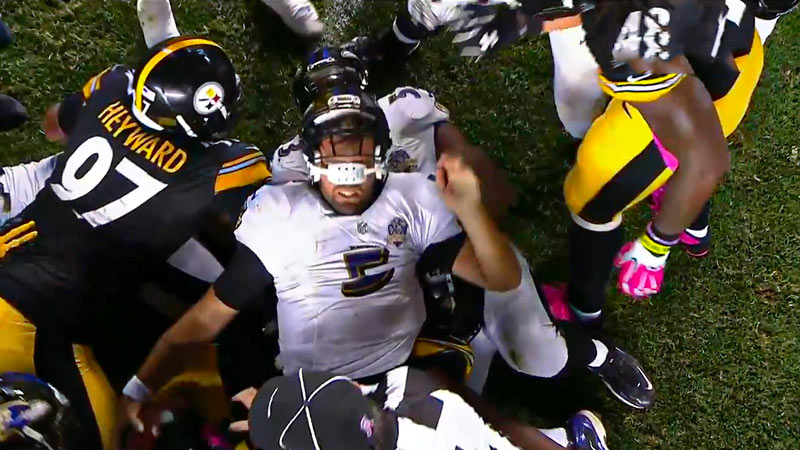
Properly secured chin straps are essential for player safety, as they help secure the helmet. Fines for chin strap violations serve as a deterrent.
The first offense results in a $7,875 fine, with subsequent offenses carrying a $10,500 penalty. Ensuring equipment compliance is crucial to minimize head and neck injuries.
Personal Messages
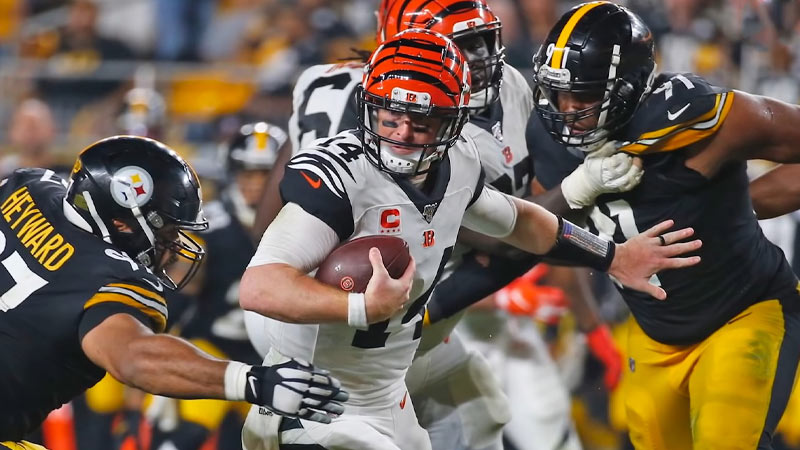
The NFL prohibits players from using their uniforms to convey personal messages or causes. This rule aims to maintain uniformity and prevent distractions.
The first offense incurs a $5,250 fine, while a second offense doubles to $10,500. It underscores the league’s commitment to keeping the focus on the game and avoiding divisive messaging.
Uniform/Equipment Violation
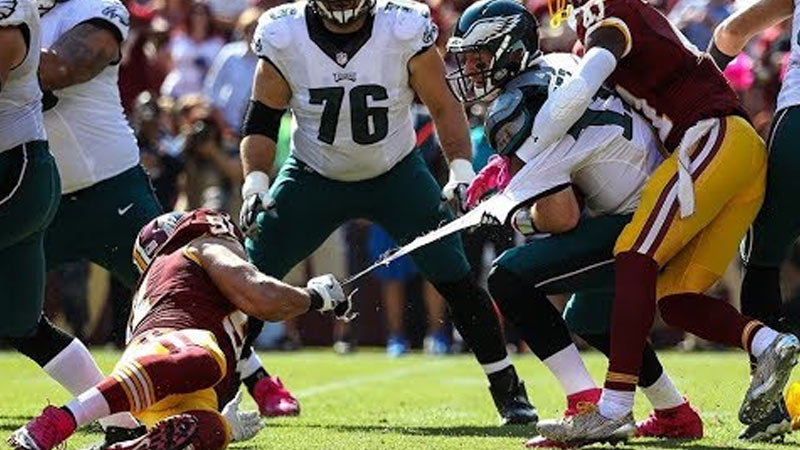
Uniform and equipment violations in the NFL are subject to fines as a means to maintain player safety and adhere to league standards.
These fines are imposed to ensure that players wear approved gear that reduces the risk of injury and maintains the integrity of the game’s aesthetics.
Uniform violations can include wearing unapproved cleats, altering jerseys, or failing to have the necessary equipment properly fitted. Such violations not only compromise player safety but can also affect the fairness of the game.
The fines are structured with increasing severity for repeat offenses, encouraging players to consistently adhere to the rules.
Physical Contact with Official
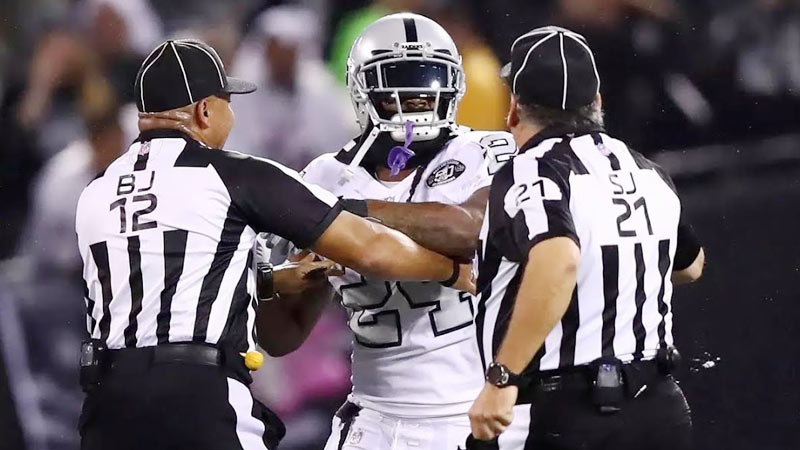
The NFL takes physical contact with officials very seriously. The fines for this offense are substantial because they deter players from engaging in any behavior that might compromise the safety or integrity of the game officials.
Contact with officials not only undermines their authority but also jeopardizes their well-being.
These fines serve as a strong deterrent, discouraging players from making physical contact with officials, whether intentional or accidental.
Verbal/Non-Physical Offense Against Official
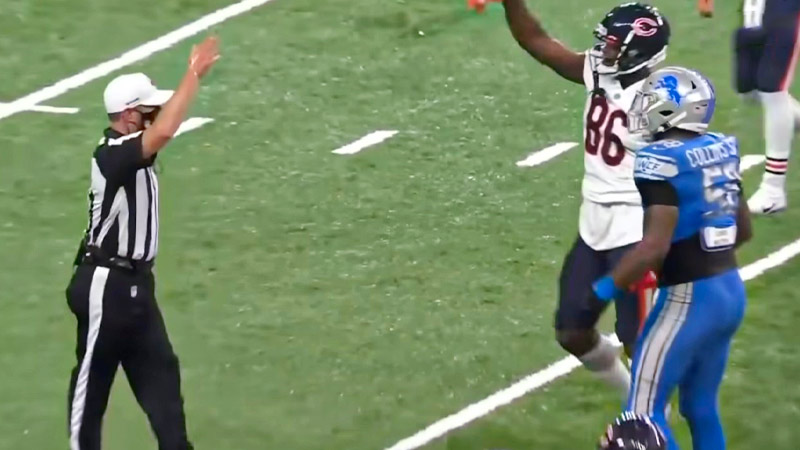
Verbal or non-physical offenses against officials, such as disrespectful language or gestures, are penalized with fines. These fines aim to maintain the respectful and sportsmanlike conduct expected in the NFL.
Disrespect toward officials not only undermines their authority but also sets a poor example for fans and younger athletes.
The fines escalate for repeat offenses, emphasizing the importance of showing respect to game officials and upholding the league’s standards of sportsmanship and professionalism.
NFL Football Fines Rules: At A Glance
here is a table summarizing the NFL Football Fines Rules:
| Fine Type | **1st Offense ($) | 2nd Offense ($) |
| Striking/Kicking/Kneeing | $7,875 | $15,750 |
| Horse Collar Tackle | $15,750 | $31,500 |
| Face Mask | $7,875 | $15,750 |
| Leg Whip | $15,750 | $31,500 |
| Late Hit | $7,875 | $15,750 |
| Spearing | $21,000 | $42,000 |
| Impermissible Use of Helmet | $21,000 | $42,000 |
| Hit on Defenseless Player | $21,000 | $42,000 |
| Blindside Block | $21,000 | $42,000 |
| Roughing the Passer | $15,750 | $31,500 |
| Low Block | $7,875 | $15,750 |
| Chop Block | $7,875 | $15,750 |
| Fighting | $26,500 | $52,500 |
| Entering Fight Area (active) | $5,250 | $10,500 |
| Entering Fight Area (inactive) | $2,625 | $7,875 |
| Unsportsmanlike Conduct | $10,500 | $21,000 |
| Taunting | $7,875 | $10,500 |
| Football into Stands | $5,250 | $10,500 |
| Foreign Substance | $7,875 | $15,750 |
| Chin Straps | $7,875 | $10,500 |
| Personal Messages | $5,250 | $10,500 |
| Uniform/Equipment Violation | $5,250 | $10,500 |
| Physical Contact with Official | $26,250 | $52,500 |
| Verbal/Non-Physical Offense Against Official | $21,000 | $42,000 |
Please note that these fines can vary depending on the specific circumstances of the infraction, the player’s history of violations, and other factors.
FAQs
What are NFL fines, and why are they imposed?
NFL fines are monetary penalties imposed on players for various rule violations, including actions that jeopardize player safety, sportsmanship, or the integrity of the game.
They serve as deterrents to maintain the standards of fair play and conduct within the league.
How are NFL fines determined for specific infractions?
The NFL has a predetermined schedule of fines for different types of rule violations.
These fines are outlined in the NFL’s official rulebook and collectively bargained agreements with the players’ union. Repeated offenses often result in higher fines.
Do players have the opportunity to appeal NFL fines?
Yes, players have the right to appeal fines through the NFL Players Association (NFLPA).
An appeal process allows players to contest the fines or seek reductions based on various factors, such as the severity of the violation or extenuating circumstances.
What happens to the money collected from NFL fines?
The money collected from NFL fines is typically donated to charitable organizations, including those focused on player health and safety, as part of the league’s social responsibility initiatives.
Can NFL teams be fined for rule violations as well?
Yes, NFL teams can also be fined for certain rule violations, such as salary cap breaches or tampering with player contracts. These fines are distinct from player fines and are imposed on the team’s ownership or management.
Wrapping Up
In the NFL, fines serve as a crucial tool to maintain the integrity of the game, protect player safety, and uphold the standards of sportsmanship.
As we’ve explored the diverse range of infractions and their associated penalties in the NFL Football Fines Rules List, it becomes evident that these rules are far more than just a monetary consequence.
They are a reflection of the league’s commitment to ensuring a level playing field where players compete with respect and adherence to the established guidelines.
While the fines may vary in severity and impact, their significance cannot be understated. They contribute to the overall accountability of NFL players and teams, helping to keep the game fair and safe for all involved.
As we continue to celebrate the athleticism and excitement of NFL football, let’s also appreciate the discipline and responsibility that underpin it, making it the dynamic and revered sport we love.

